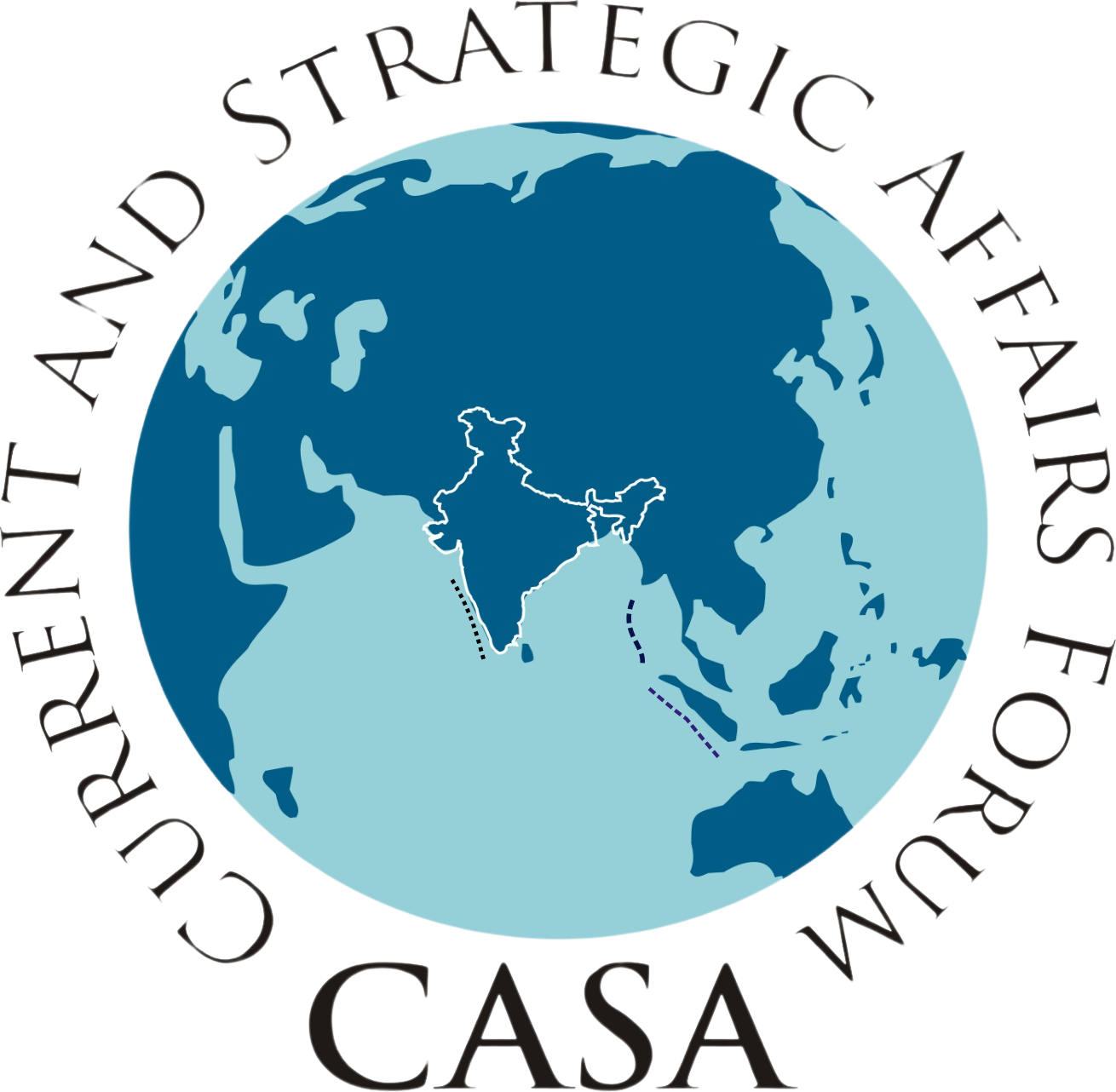From Riviera to ‘Shalom Hamas’: Not many choices for Gazans in Trump 2.0
- April 1, 2025
- Posted by: Anil Trigunayat
- Categories: Gaza, US

President Donald Trump, currently the most powerful leader, whose unpredictability yet opposition to wars has acted as an implicit deterrence to the warring parties across the spectrum, has added a new angle to the whole Gaza imbroglio in his transactional style
Gazans have endured decades of suffering, but the past fifteen months have been particularly devastating. The unprecedented Hamas terror attacks on Israel on October 7 and Israel’s subsequent response with intense bombing campaigns have not only targeted Hamas but also taken a severe toll on ordinary Palestinians, exacerbating the humanitarian crisis.
But while the Benjamin Netanyahu-led ultra-rightist government may have felt elated by its occasional military successes, ordinary Israelis have also lived through fear and insecurity. Despite being decimated, Hamas remains an ideological force and is on the negotiating table and still holding hostages dead or alive as a pawn for their continued relevance and survival.
Advertisement
The second ceasefire secured under threats from President Donald Trump, and with the help of Egypt, Qatar and US, forced the two sides to come to terms for an immediate ceasefire before Trump’s inauguration. But as is their wont, both have continued to change their goalposts, accusing the other of violating the agreed terms of the truce. Ironically, the survival of Hamas ideology and Netanyahu’s political leadership hangs in the balance on the continuity of this war.
Then you have President Trump, currently the most powerful leader, whose unpredictability yet opposition to wars have acted as an implicit deterrence to the warring parties across the spectrum. But he has added a new angle to the whole Gaza imbroglio in his transactional style.
Trump has sought to displace the two million embattled Gazans to other countries, pushing Jordan and Egypt to take the hit—both of which have peace treaties with Israel and are suffering economic hardships even though they are significantly dependent on the US for financial support and bailouts. Jordan, apart from its 60 per cent population of Palestinian origin, is already hosting millions of Syrians, Palestinians, Iraqis, Libyans, and others, but it also hosts one of the largest US bases that adds to its strategic security.
You May Like
People In West Bengal Say Goodbye To Mosquitoes With This Revolutionary SolutionMosquito EliminatorRead More
Trump would prefer to develop Gaza into a Riviera—a beautiful place or another Atlantic city on the Mediterranean—with his great candour, casinos, and resorts since it is blessed with natural beauty and huge hydrocarbon resources and connectivity potential, and due to Israeli bombing, it has already been flattened. So ready to do it up.
How did he get this idea? Most likely during his White House meeting with PM Netanyahu, who has been wanting to evict Gazans and to clean up the strip for Israel’s own stratagems. Early on, he has tried to push them to Sinai and even Africa, failing which over 48,000 Palestinians have been killed, leading to allegations of genocide at the International Court of Justice (ICJ) and even an arrest warrant by the International Criminal Court (ICC), which has come under fire from the non-member mighty US for the ‘imprudence’ and ‘daring’.
Advertisement
Since the occupation of Gaza by Israel would not be acceptable at any cost by the regional majors, including partners in the Abraham Accords, it would be expedient for Trump, the benefactor, to take it over, which was perceived to be the path of least resistance.
Glee and glare on the face of Bibi was evident when Trump mooted the insensitive idea. He did not expect much opposition, but it shook up the region as irate Egyptians and Jordanians indulged in regional shuttle diplomacy to avoid being in the firing line. Even as Trump eased his stance by admitting that this was his recommendation for the good of Gaza—of course at the expense of Palestinians—the Arabs, especially Saudi Arabia, the next big prize for the Abraham Accords, rose to the challenge, committing to a “Coalition for the implementation of a Two-State Solution”.
Advertisement
Riyadh and all other capitals in the region have scoffed at Trump’s idea but needed to come up with an alternative plan since ‘Day After’ in Gaza is the most difficult scenario, and Israel would not settle for either Hamas or the Palestinian Authority being a part of the Gaza Administration going forward while the ceasefire itself hangs by a thread.
The extraordinary Arab League meeting in Cairo discussed the Egyptian proposal, which was broadly acceptable to Hamas, and they came up with a plan and a $53 billion commitment for the reconstruction without displacing Palestinians from their land. It ticked off several boxes accommodating Israeli concerns with regard to Hamas being excluded from the governance architecture during the reconstruction phase. They also insisted on the Palestinian Authority reforming itself at the earliest and the appointment of a vice president as well as the holding of general and presidential elections. A group of regional foreign ministers will be heading to Washington, DC, since the US endorsement will be the key.
Advertisement
Meanwhile, Israel wants to retain security control over Gaza and make it into the ‘Zone D’. Hence, its Foreign Ministry criticised the summit’s approach, arguing that it fails to reflect the realities on the ground and omits any reference to the Hamas-led 7 October cross-border incursion. Although one witnessed an evolving Arab unity around the plight of Palestinians, the approach has been quite toothless, reiterating the theoretical Arab Peace Plan of 2002 without any concrete proposals or media to enforce it. At best it can be said to have left doors ajar for all sides to come in and eventually derail it unless, of course, the US buys into it.
Advertisement
As the second phase of the continuing ceasefire is still in the doldrums, US Special envoy Steve Witkoff, visiting the region, has come up with a plan to extend the ceasefire in the first phase during the Ramadan and Passover periods, provided Hamas releases the remaining hostages at the earliest. On the other hand, Hamas wants negotiations for the second and third phases, which will allow a permanent ceasefire and Israel vacating Gaza. President Trump’s administration has been directly engaged with Hamas as his special envoy for hostage affairs, Adam Boehler, has been conferring with Hamas leaders in Doha for the release of hostages, which the latter considers as the only arrow in their quiver.
President Trump himself, in his peculiar, rather ominous way, warned Hamas as he has given the green light to Netanyahu to decide the future course. Reiterating that “Shalom Hamas” means ‘Hello’ and ‘Goodbye’. Trump warned and enticed Hamas to immediately release all the hostages, threatening “This is your last warning. For the leadership, now is the time to leave Gaza—while you still have a chance. Also to the people of Gaza: A beautiful future awaits you, but not if you hold hostages. If you do, you are dead. Make a smart decision… or there will be hell to pay later.”
Whichever way one looks at it, Gazans really have not much of a choice to forget about the Palestinian issue or the Two State solution any time soon. They won’t know whose Riviera they are going to inhabit!
The author is the former Indian Ambassador to Jordan, Libya and Malta and is currently a Distinguished Fellow with Vivekananda International Foundation. Views expressed in the above piece are personal and solely those of the author.
